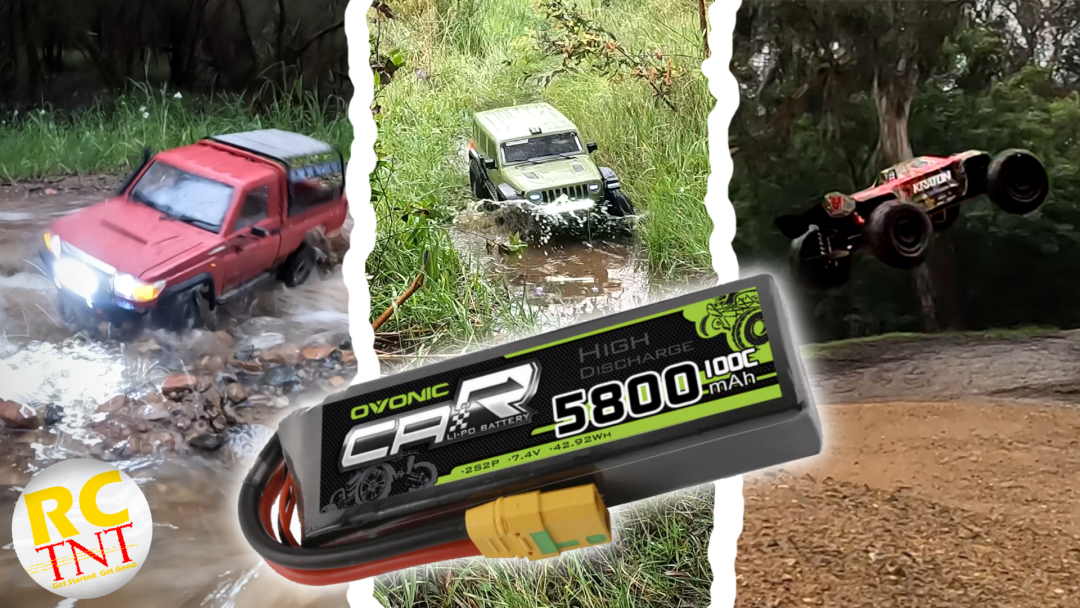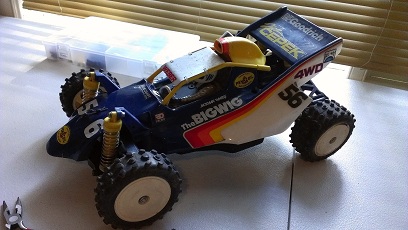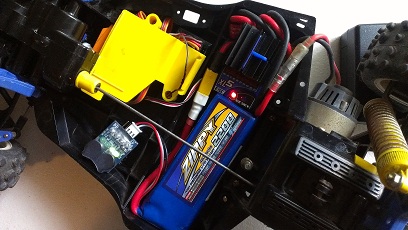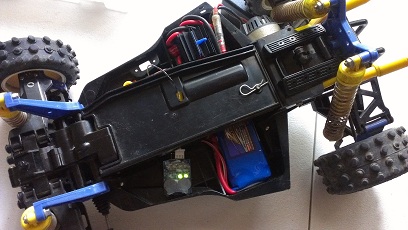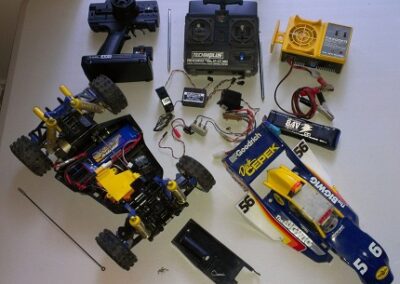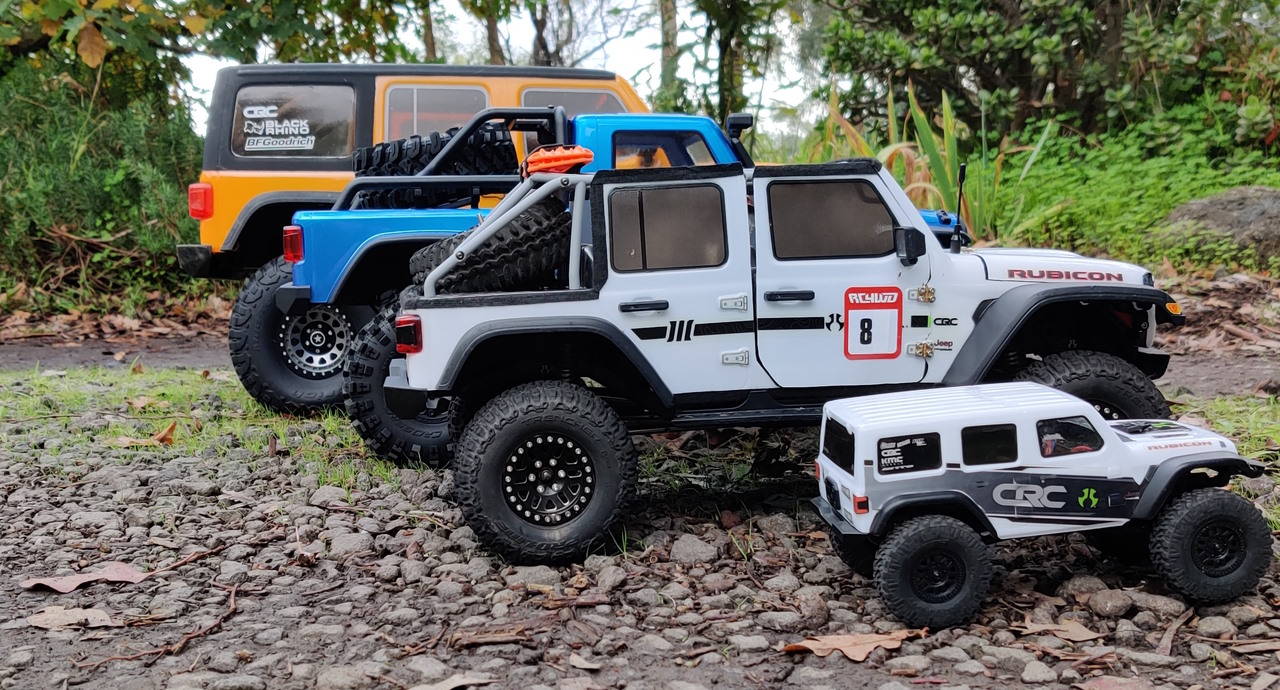Ovonic 2S 5800mAh 100C
Today we’re taking a look at Ovonic (or Ampow in USA, CAN and UK markets) lithium polymer batteries. Recently they sent us their latest high performance 2S battery, a soft-cell 5800mAh 100C pack with a 2S2P configuration. They sent two of them, in fact.
Today we’re going to take a close look at these shiny new Ovonic packs. We’ll put them through their paces and evaluate how well they deliver on their spec sheets’ claims. But first, some history and context…
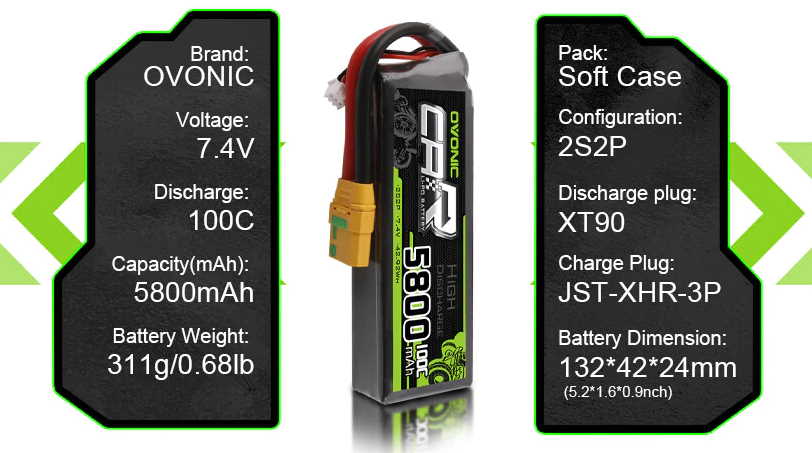
Power Struggle
The highest performance RC models are but shelf queens without a power source. I recall back in the 80s and 90s I used to dream of runtime longer than 7 or 8 minutes. I was stuck with NiCADs with my first RC models – Nickel Cadmium – a battery chemistry that is capable of high discharge but low capacity. That’s not to mention the memory effect, something I’m so pleased we don’t need to worry about anymore!
NiCADs could pack a punch but their power density was low, so they didn’t last long. When they were charged up, though, you really got some fun out of them! They were the best batteries for RC at that time. Still, they left you wanting.
Back to the 80s: the Tamiya Bigwig!
The Next Generation
In the late 90s and through the next decade, we hobbyists were increasingly using NiMH – Nickel Metal Hydride – cells. Racers still used NiCADs for their high discharge capability. But for the rest of us, NiMH packs had a higher power density than NiCAD batteries, but a lower discharge ceiling. In other words, our model runtime improved with the NiMH cells. Also, there was no more memory effect (woohoo!). These were the new best batteries for RC!
The downside was somewhat slower models, as the discharge potential from NiMH is lower than NiCAD and they just couldn’t dump the same instant power into the speed controllers. Still, that extra runtime was a real win.
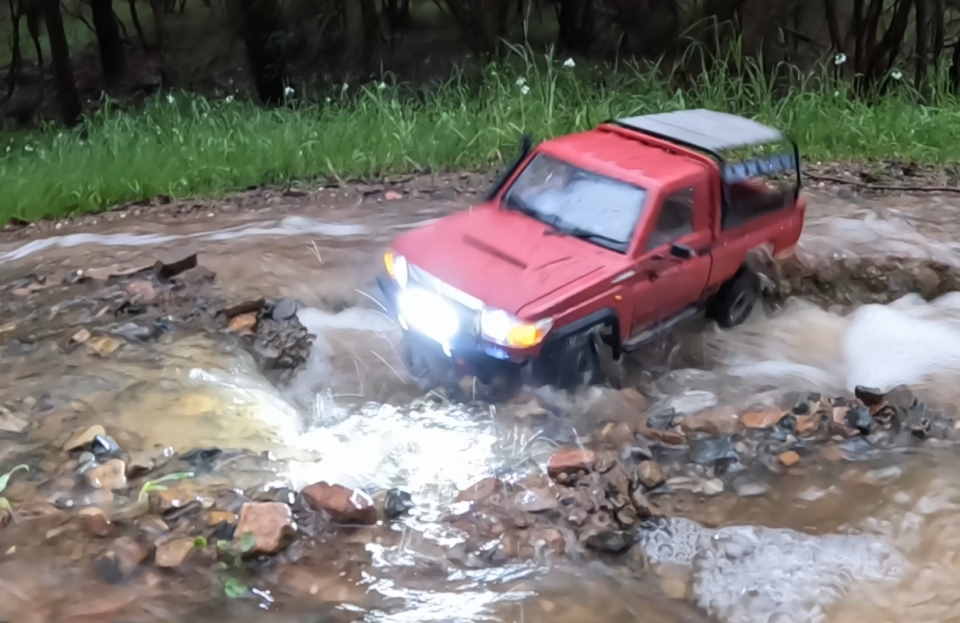
Present Day
The revolution came with the advent of Lithium Polymer batteries – LiPOs! Lithium Ion and LiPO battery packs are similar in that they cannot be discharged completely without suffering internal damage. They also don’t like being full for too long. Importantly, lithium-based batteries need to be balanced across the individual cells inside a given battery pack during charge and discharge process. Many early battery packs did not have a balance lead to help keep this in check, leading to many of the horror stories of people’s garages or houses burning down.
Thankfully, things changed quickly as the market demanded safer options. Batteries came with balance leads and chargers came with balance ports. Now, lithium batteries could be charged and balanced safely. This was huge. These are now the best batteries for RC!
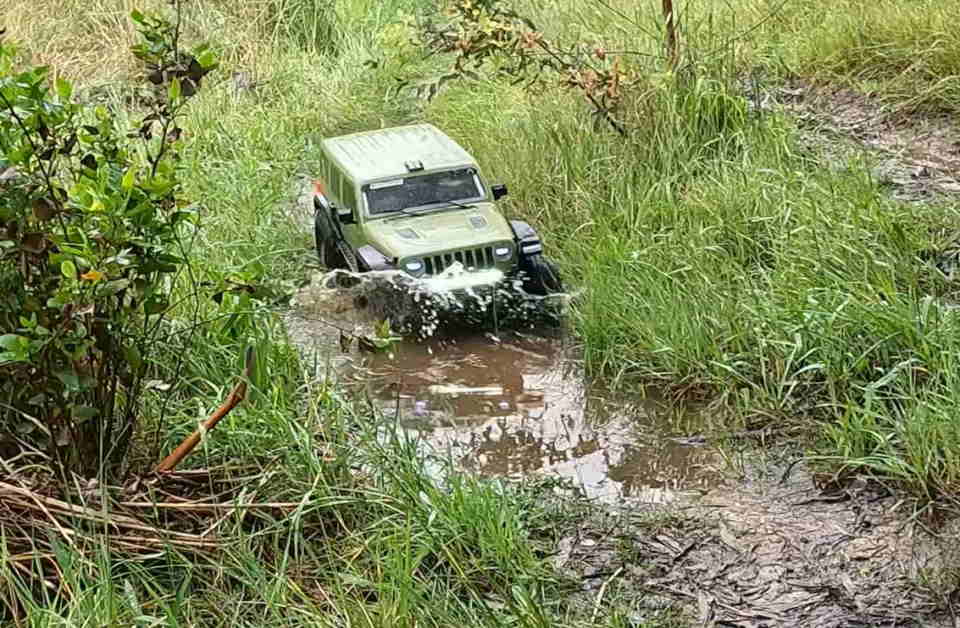
Why LiPO is King
Lithium polymer batteries are revolutionary to RC due to their power density that exceeds that of NiMH and their discharge potential that rivals and sometimes exceeds that of NiCAD. With no memory effect and the flexibility to ‘build’ a LiPO cell in 3.7v increments, LiPO batteries deliver the best of both NiCAD and NiMH worlds.
Fast forward to today and there is nearly endless choice of LiPO batteries for our RC models. Although we’ve been at the limit of chemical engineering with regards to power density and associated capacity and discharge potential, not all LiPOs are created equal.
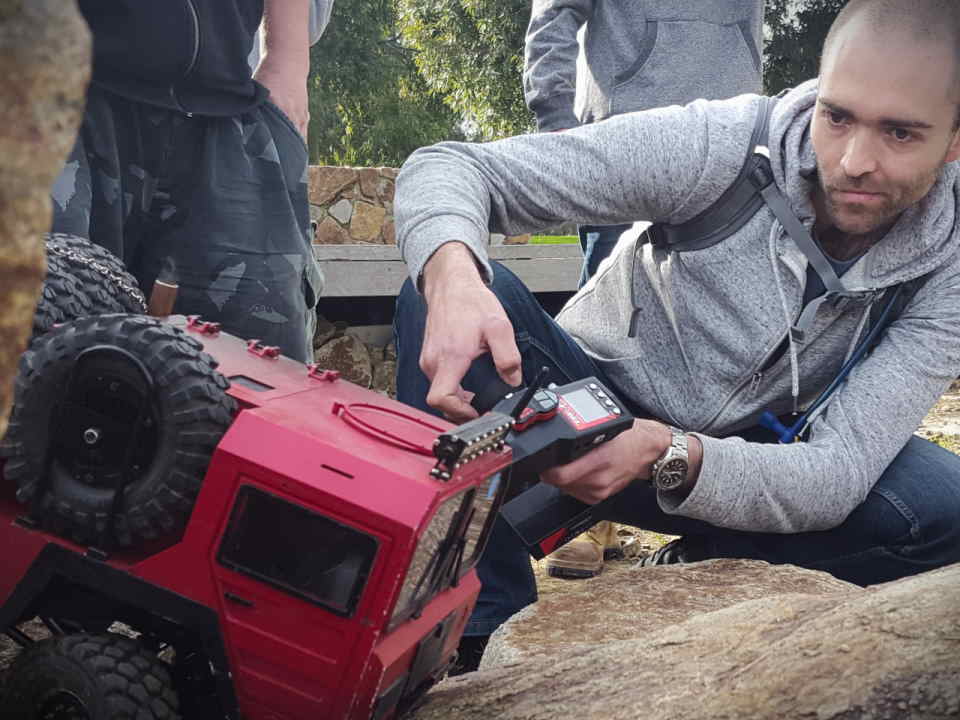
What’s In a Battery?
There are three main factors that determine how a LiPO battery will perform. First, you should know that lithium-polymer chemistry has a nominal voltage of 3.7V and a working range of 3.0V to 4.2V (you can go lower or higher than that range but it brings risk of damaging the cell). Here are the three main factors we use to measure LiPO batteries:
- Cell count: how many cells a LiPO battery has. The cell count of a battery is denoted with ‘S’. So, a 1S battery will be a LiPO with a single cell. A 2S battery will be a 7.4v battery with a working range of 6v to 8.4v. A 3S battery will be an 11.1v battery with a range of 9v to 12.6v, and so on.
- Capacity: how much power does the battery contain? This is measured in milliamp hours, or mAh. More mAh means longer runtime, but also means a bigger physical pack. The smallest LiPO batteries in the RC hobby are 50 to 100mAh 1S batteries that are usually in tiny scale cars and quadcopters. The batteries I use in competition rock crawling are 450mAh to 700mAh, while the pack size commonly used in trail driving and in ‘bashers’ (faster, muck-around buggies and trucks) is typically 4000mAh to 7000mAh.
- Discharge potential: also known as a battery’s ‘C rating’, discharge potential is denoted by a number next to ‘C’. The C-rating is a number times the pack’s capacity. For example, a 2000mAh 50C battery should be able to deliver 100 amps, or 50x its 2000mAh capacity.
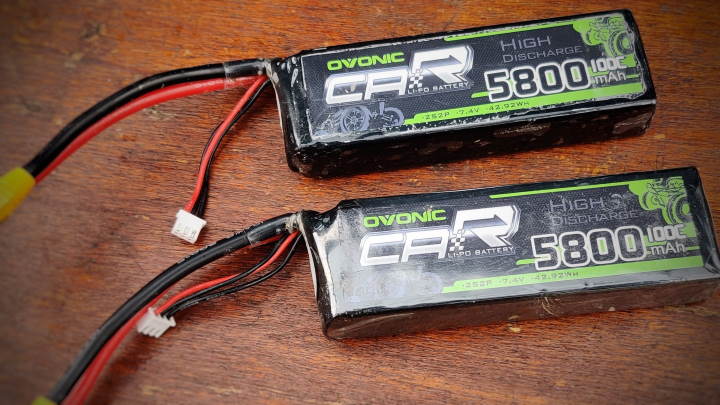
Performance & Runtime
If you want to run for longer, it’s usually as simple as getting the biggest pack that fits your vehicle. This is with the proviso that the battery’s C-rating is sufficient to meet the power draw of whatever vehicle it’s powering. If this is not the case, you’ll have poor performance at best or a failed battery (sometimes violently so) at worst. Crawlers usually only need a 30C pack, but some high-performance machines might need 50C or better. Bashers and high-performance quadcopters should be given the highest C-rated battery you can afford. This is how you find the best battery for RC for your application.
The runtime a battery can deliver is a function of its capacity and its quality. I’m not a chemist but I have years of experience working with batteries, alongside my hobby pursuits. In my experience I’ve consistently found that a higher C-rated battery will generally last longer in a high-drain application than a low C-rated battery of same rated capacity. As long as your C-rating is sufficient for the vehicle, the only other factor to consider is weight. Bigger batteries weigh more, so there’s a trade-off in performance whether its in the air, on the rocks or on the race track.

What’s the Best Battery for RC?
This brings us to the focus of today’s article: the new Ovonic 2S 5800mAh 100C LiPO battery. Since you now know what the numbers mean in its label, you may be able to tell that these Ovonic batteries are best suited for bashing or larger trail rigs.
It’s a 2-cell battery, meaning 7.4v nominal. The 5800mAh capacity means it’ll be a long-lasting pack and 100C means it can theoretically deliver 100x its capacity in a moment – 580 amps, in this case. It may not be able to actually meet that level, as I suspect 70C may be about as high as lithium polymer cells can realistically deliver, but nonetheless, 100C means it should be about as high quality as this battery chemistry allows.
Does this battery actually deliver on those specs? Is it the best battery for RC bashing and trail driving? We put it to the test to find out. Check out our video below and if you’re interested in trying one of these for yourself, you can buy it here.
A spoiler: I really like these batteries and will personally be using more Ovonic LiPOs in future. These have been perfect. Our thanks to Ovonic for supplying them for review – knowing how good they are, I’m going to buy more!

Craig Veness
RC-TNT
Craig has been into radio control since the 90s and into RC crawling since about 2010, when a Losi MRC started the obsession! Now it's all rocks this and crawl that and upgrade all the things! ...You know how it is, right? Welcome home 🙂

